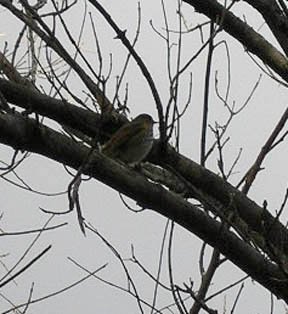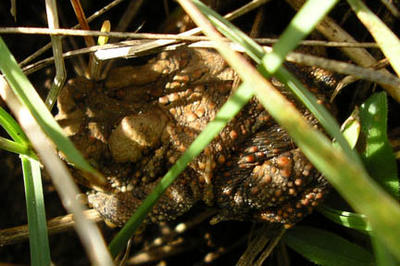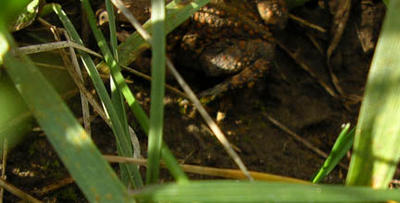Last meme (and first for me) I caught I just picked up for myself at
Pharyngula (
Twenty-third Post Meme). But now I've been thrice tagged (
Woodsong,
The House,
Snail's Tales) for the Personal History Meme, so I'll give it a shot:
10 Years Ago: I was in my third year as a doctoral student in philosophy at the University of Alberta in Edmonton. That year I was a TA for a service course in Environmental Philosophy designed (well, at least intended) for environmental science students. It was my third time with this course, this time being team-taught by two young professors for the first time. (Later I taught this course a couple of times myself.)It was a conversation with one of these guys, a post-doc from Georgia, that first piqued my interest in the eastern coyote. I made some reference to the coyote's being a predator of the white-tailed deer, to which he responded that coyotes in his part of the world didn't go after prey that large. I don't know if that's true of Georgia coyotes, but it is true of some western coyotes, which, I was to discover, are significantly smaller than the coyotes of the east.
5 Years Ago: I had been living in Thomasburg for three years by then, and while I had passed my candidacy exam the year before, I think by this time the possibility of my actually finishing my thesis was starting to fade. Meantime, I had started to walk the fields, and was continuing to research the eastern coyote, the red wolf and the eastern wolf, and all in between, in books, on the internet and by following the spoor in the neighbourhood.
A Year Ago: Just finished the second-last, and for me best--until this year, year of collecting data for the Ontario Breeding Bird Atlas. Best, because it was the year I really started to hear bird song, thanks to some much more experienced birders who spent some time with me in the field.
Yesterday: Regretted the fog and smog (result of a strangely humid fall heatwave) that made my morning walk impossible.
5 Songs I Know All the Words To: This is a toughie. I know many songs in a sing-along kind of way, but songs I could stand up and sing on my own? "Born to be Wild" is one that springs to mind--when I lived in Toronto I bicycled everywhere, and found this song to be an excellent accompaniment to pedalling.
5 Snacks: old cheddar cheese and stoned-wheat thins; honey-nut cheerios; homemade oatmeal cookies with raisins; pepperettes; ovaltine.
5 Things I'd Do with $100 million: pay debts (and give some to family), buy land, build an off-grid or partially off-grid house--which would use hardly any of it, so donate to, or create restoration projects to improve wildlife corridors and protect wetlands and other threatened habitats, and donate to international charities that focus on helping women start small businesses.
5 Places I'd Run Away to: I like where I am, but I'd visit Australia, New Zealand, Africa, down the Amazon, American Southwest.
5 Things I'd Never Wear: "Never" is such a strong word. Only thing I can think of is high-heeled shoes, because I've never worn them and if I started now I'd just fall.
5 Favourite TV shows: North of 60, Grey's Anatomy, Survivor, This Life, Davinci's Inquest.
5 Greatest Joys: Out in the fields, when I can really feel my feet on the ground and can stay still, in the moment, in one great spot indefinitely; writing, when the flow is working; reading a mystery curled up in a cozy chair by the woodstove--and I notice writing this that all three are the same thing--achieving that state of being in the moment, so really one would have been enough.
5 Favourite toys: digital camera; Canadian Geographic photographer's vest I use for field gear; headlamp; squeaker that came with a backyard bird guide that only occasionally elicits a response from a bird, but is fun to use in any case; my new bright yellow knapsack.
5 People I'm Tagging: I haven't been at the computer much in the last few days, so I'm not sure who all's already been tagged, nevertheless, I hereby tag:
Roundrock Journal, the mysterious
Modulator, Duncan at
Ben Cruachan Blog, John at
A DC Birding Blog, and the IBWO sceptic, MW Blogger at
My Thoughts. And once I got started I realized that there are many, many more I want to know more about--so spread it around!































